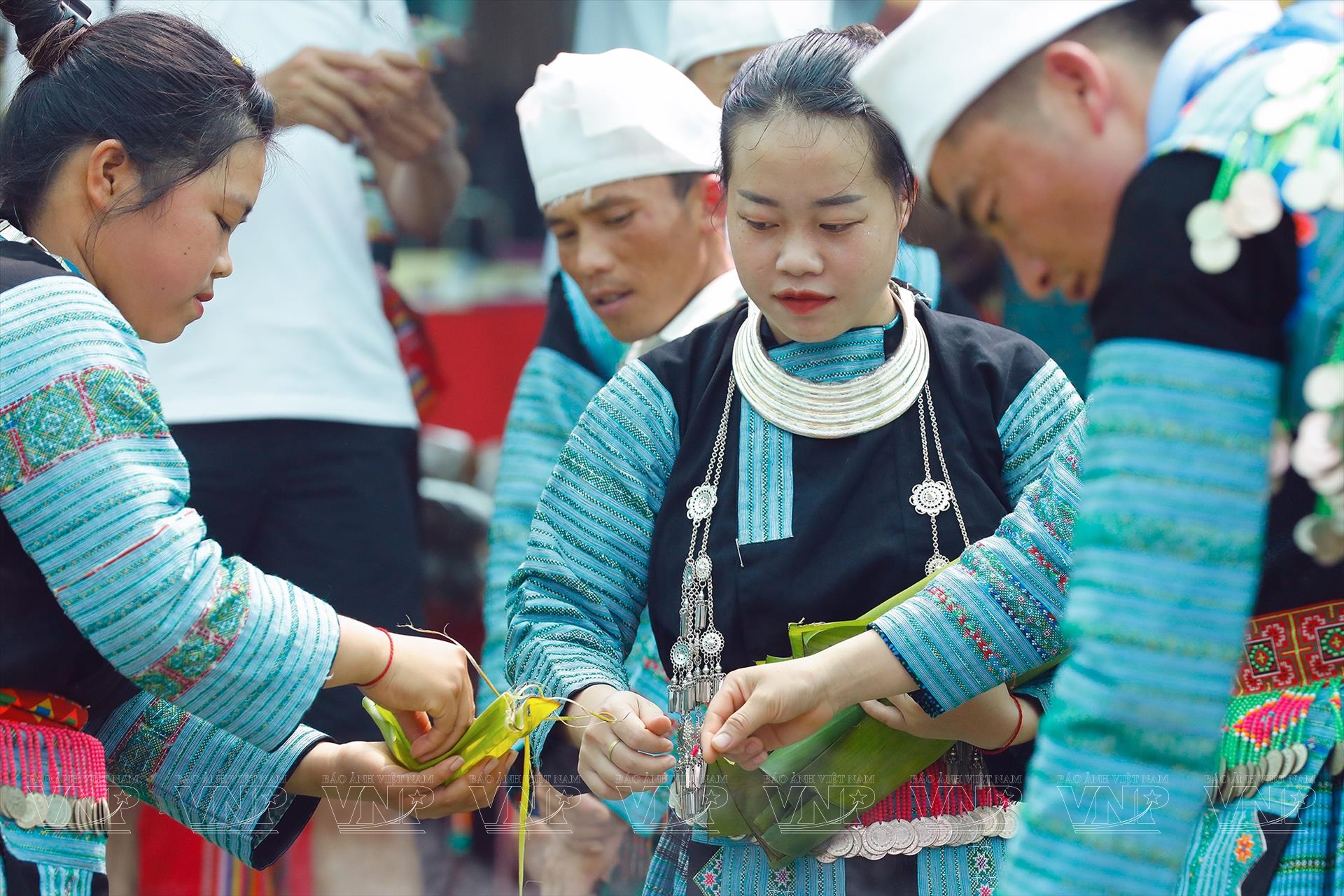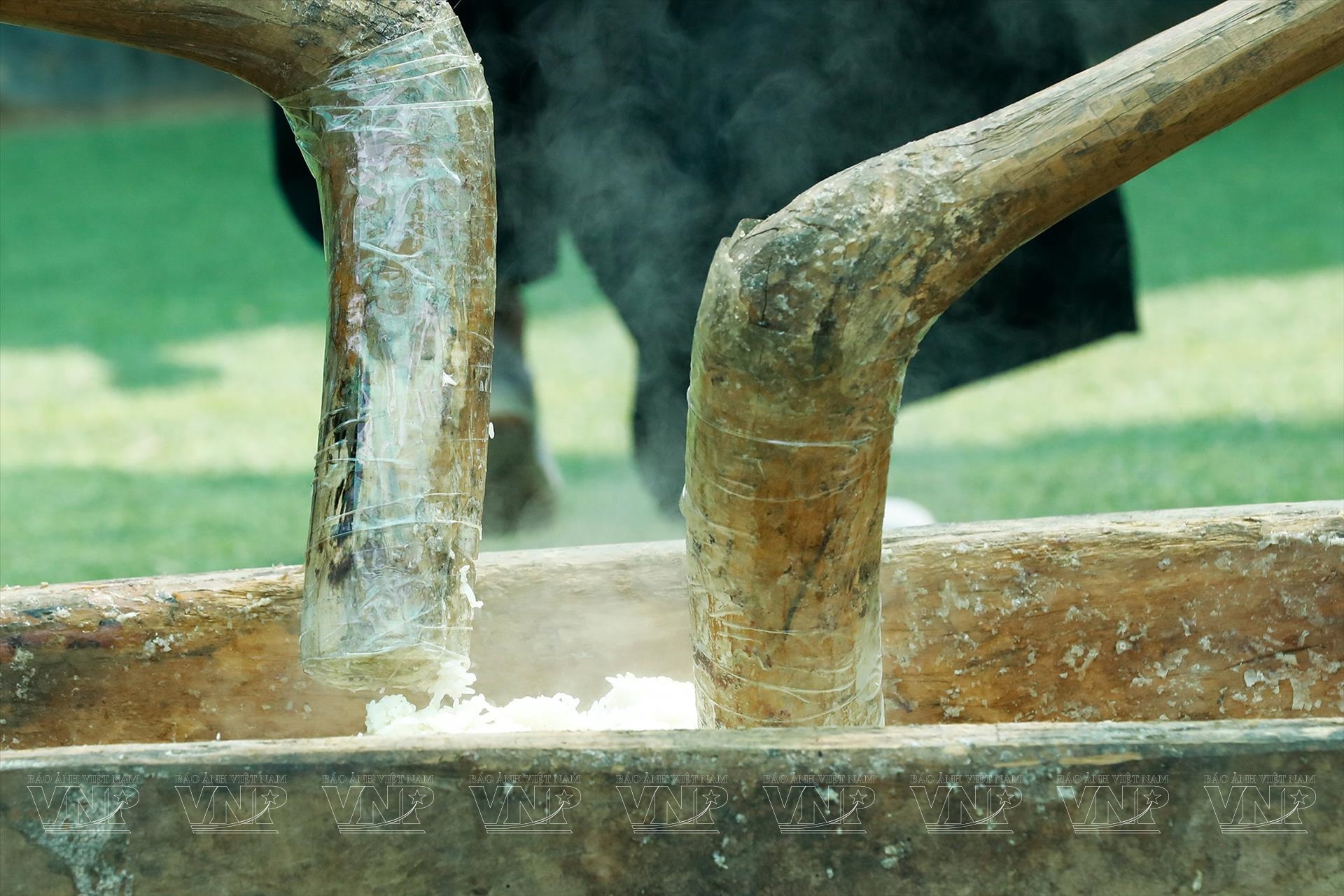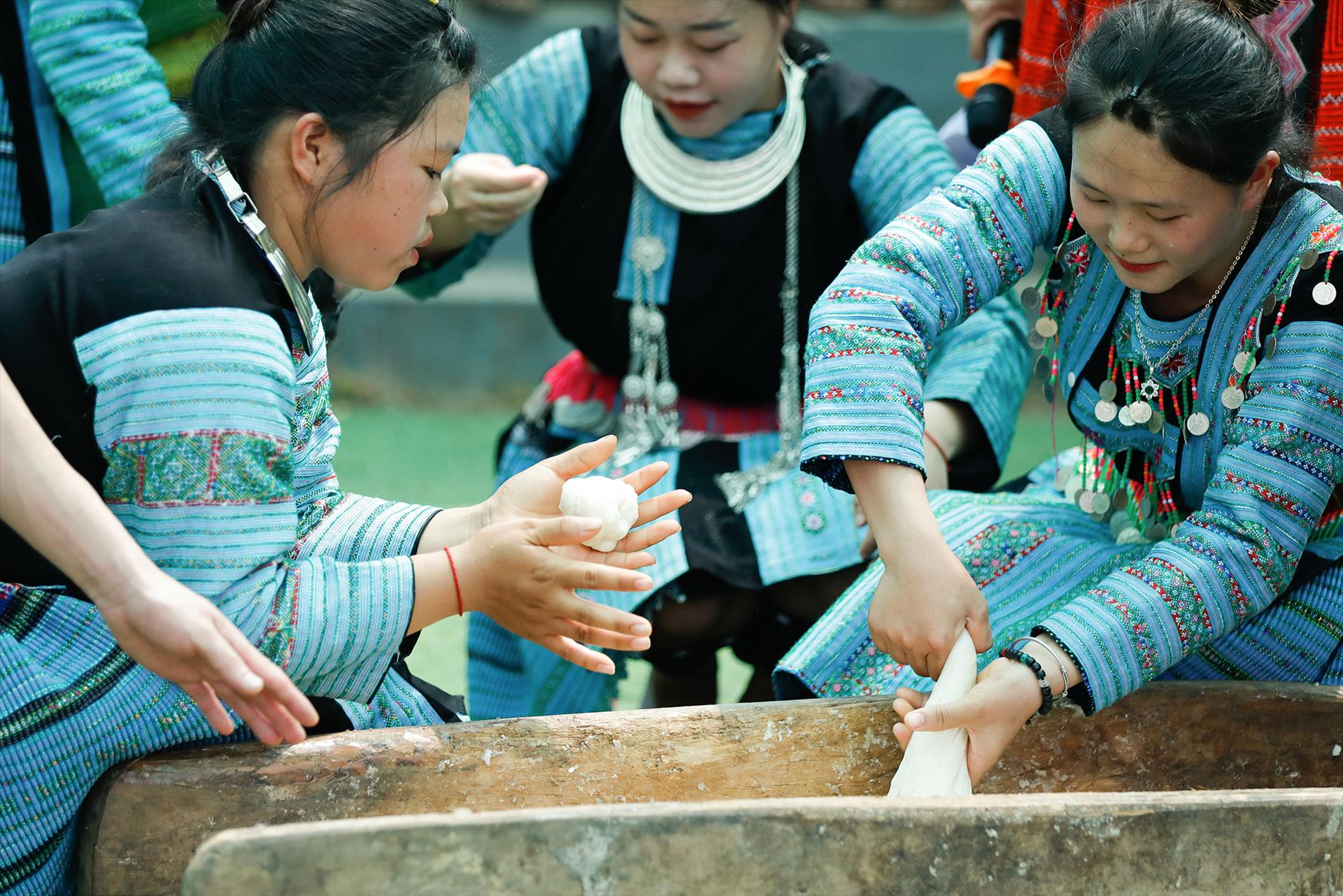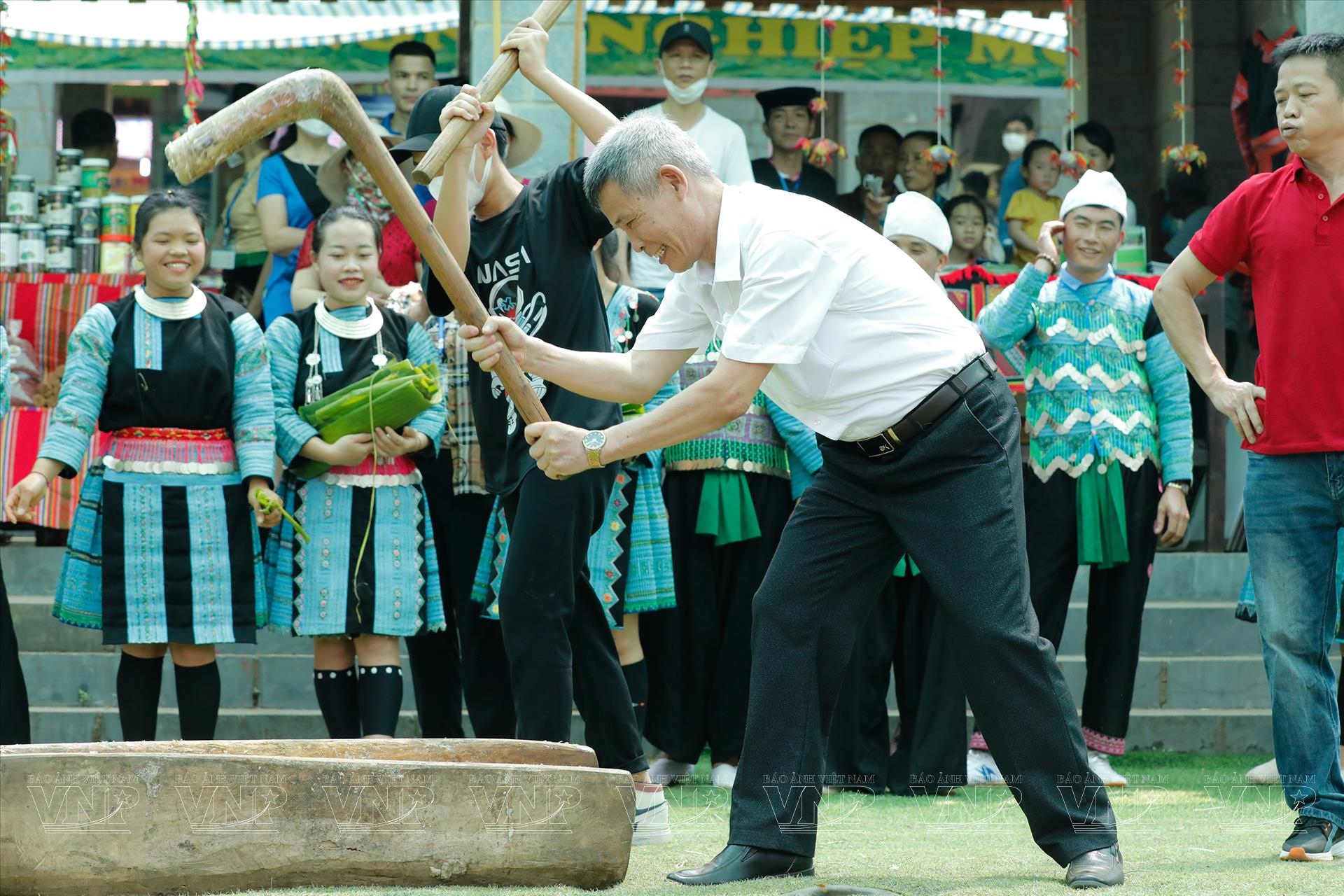Green H’mong’s Banh day for Tet
For Green H’mongs, banh day (round glutinous rice cake) is a symbol of the moon and the sun where they believe people and all things on the earth were born. This cake also is a dish on the altar of the group during Tet and other festivals.
The Green H’mong use sticky rice grown on terraced fields to make banh day. Fragrant rice grains are cleaned and soaked in water for three to four hours and then steamed in a pot. Steamed sticky rice grains are pounded smoothly using a mortar and pestle.
The mortar is a hollowed out trunk of a tree shaped like a trough and the pestle also is made from wood. The pounding requires strength and persistence so men are usually responsible for pounding the sticky rice. Two men standing on both sides of the mortar rotate to pound quickly while the sticky rice is still warm and gets smooth enough.
Right after the men complete their pounding, women perform their part. They make the shape for banh day like a moon and a sun and wrap them in banana leaves. The sticky rice must be pounded very well so that the Green H’mong’s banh day is very delicious and smooth.
The people make banh day during Tet and other festivals. Making banh day is also a time for dating for boys and girls in the hamlets. At that time, the boys show their strength, the girls perform their ingenuity and soon after, many couples often become married.

At present, making banh day is still important during major cultural festivals in Moc Chau district, Son La province. Visitors can have a chance to experience making banh day and other unique community activities of the Green H’mong.
A visitor experiences making banh day in Moc Chau. Photo: Viet Cuong/VNP
By Viet Cuong/VNP Translated by Song An






